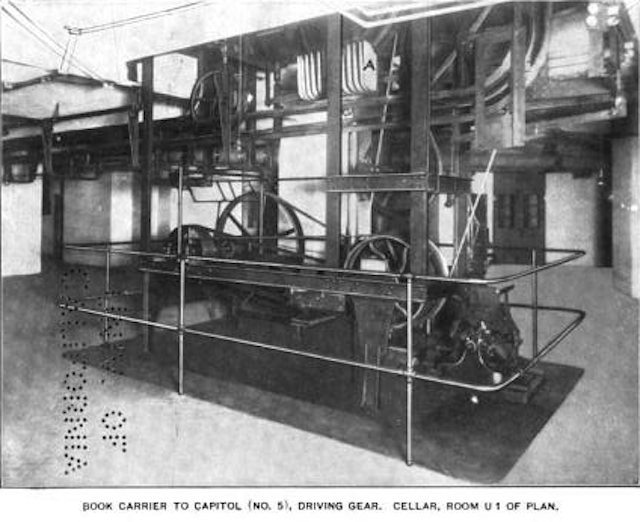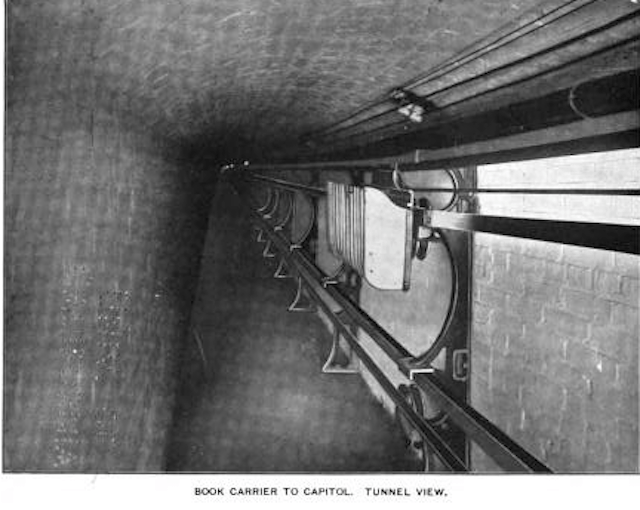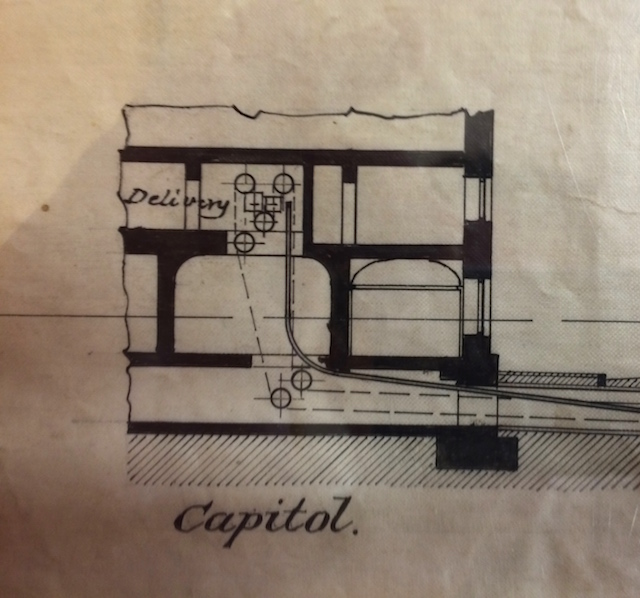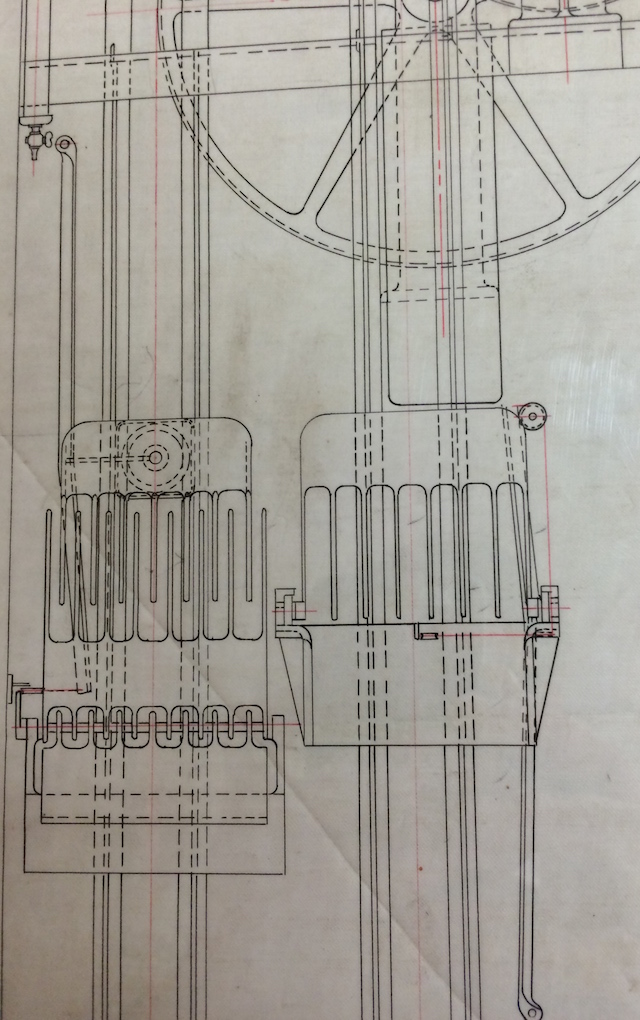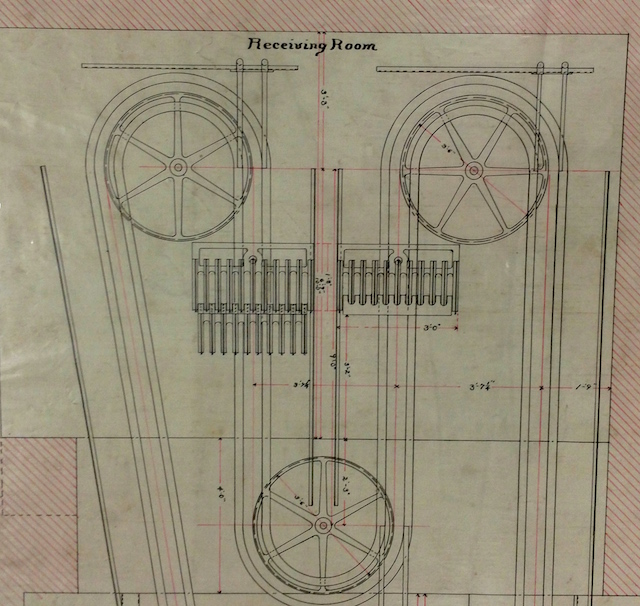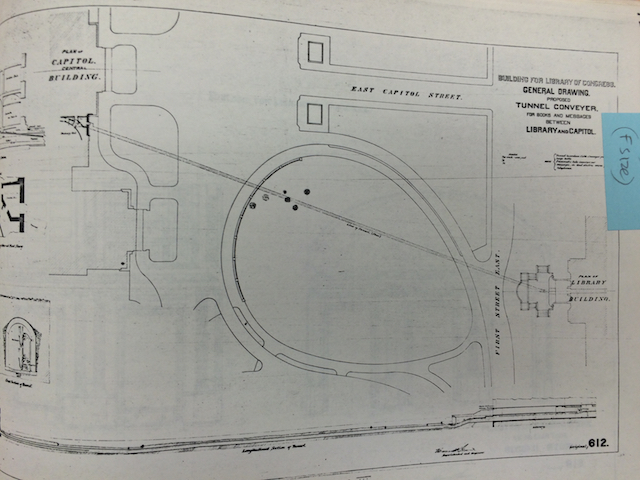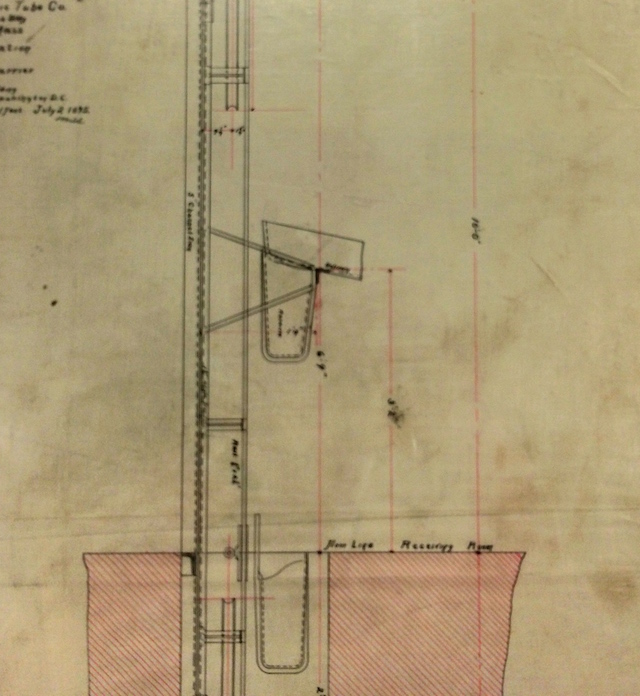Most people who work in the US Capitol don’t know about the 100-year-old book conveyor tunnel underneath them that used to connect the building to the Library of Congress. It’s long since abandoned, but it’s still down there.
Before the separate library was finished in 1897, books had been kept in the Capitol itself, and members of Congress were accustomed to the convenience of having reference materials right at their fingertips. As the 1901 book 30 Years in Washington (text here) explains, “when Congress is in session, members are constantly drawing books for immediate use in debate and in committee work.”
A key selling point for the new library was the 400m long underground book tunnel linking the two buildings. A state-of-the-art conveyor system ran the length and could whisk books back and forth at 180m per minute.
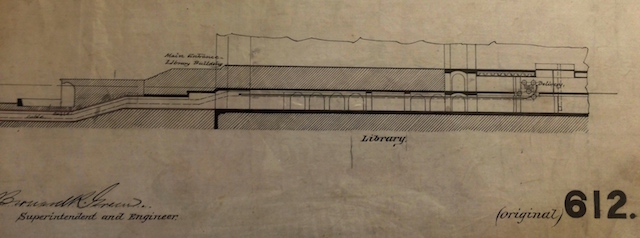
Designed by the Miles Pneumatic Tube Company in Boston, the electric “book conveying apparatus” pulled large trays in an endless loop along a rail system set into the wall. As the trays approached the Capitol’s basement, they travelled up three stories into a small receiving room near the House floor.
With the book tunnel, “a Congressman can get the volumes he desires in less time than it would have taken him when the Library occupied its old quarters in the Capitol itself. If in the midst of a speech it occurs to a Senator that he needs a certain book or the file of a certain newspaper, he has but to call a page, whisper his wish, and before he has delivered many more sentences, the page returns with the book or file.”

The book tunnel proved a big success, and historical sources amusingly noted that the system could be “noiseless” and “capable of containing the largest volumes.” The tunnel, reassuringly, was “perfectly dry.”
The entrances to the tunnel were bricked up years ago, but the 100-year-old apparatus is still down there to this day.
Capitol Hill has lots of weird legacy systems like this. Historical preservation multiplied by bureaucratic inertia dictates that even when piece of technology is abandoned, it is never fully removed.
The House of Representative offices all still have mail chutes built into the walls (now sealed up), and the room under the Senate that used to house marble bathtubs now doubles as a boiler room. The Capitol still has its rows of telephone booths, but without the telephones, and the book tunnel room in the Library is now full of servers.
More photos and blueprints here:
